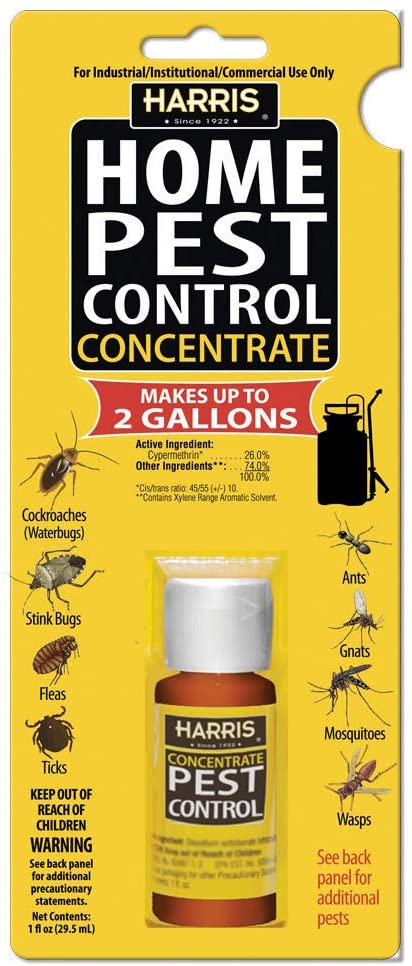A1 Bed Bug Exterminator Charlotte - Specialized Bed Bug Elimination
A1 Bed Bug Exterminator Charlotte - Specialized Bed Bug Elimination
Blog Article
Bed Pest Treatment Break Down: Comparing Chemical Vs. Non-Chemical Solutions
In the realm of bug control, specifically when managing the relentless problem of bed pests, the option between chemical and non-chemical treatment services can be an essential one. Both strategies use distinctive benefits and drawbacks, affecting variables such as effectiveness, safety and security considerations, and general cost. By checking out the nuanced details of each technique, a more clear understanding of which path to seek in addressing a bed insect infestation can be achieved.
Efficiency of Chemical Therapies
Chemical treatments for bed insect problems have been extensively recognized for their potent and rapid efficiency in removing these pests. When considering the effectiveness of chemical therapies, it is essential to understand that they can offer a comprehensive and quick option to a bed pest issue. Expert pest control experts frequently depend on pesticides to target bed bugs at various stages of their life cycle, consisting of grownups, fairies, and eggs. These chemicals generally function by disrupting the bed bugs' nerve system, causing paralysis and eventual death.
In addition, chemical therapies have the advantage of providing recurring impacts, suggesting that they can remain to eliminate bed insects also after the first application. This recurring action is particularly helpful in combating any possible re-infestations. Furthermore, the rapid activity of chemical treatments can bring relief to people dealing with severe bed insect infestations, allowing them to regain control of their living spaces rapidly.
Safety Problems With Chemical Solutions
One important aspect that calls for cautious consideration when utilizing chemical solutions for bed pest therapy is making certain the security of passengers and the environment. Direct exposure to certain chemicals made use of in bed insect treatments can lead to respiratory concerns, skin inflammation, or other adverse responses, especially in people with pre-existing conditions or sensitivities.
Furthermore, the environmental influence of chemical options is an additional considerable factor to consider. Some pesticides used in bed pest treatments might be unsafe to valuable pests, wildlife, and ecosystems if they seep into the dirt or water systems. It is necessary to utilize chemical therapies judiciously, following security standards, and thinking about much less harmful options to mitigate these dangers and make certain the safe and reliable administration of bed pest infestations.
Advantages of Non-Chemical Methods
Taking into consideration the potential security problems and environmental effect linked with chemical solutions for bed insect treatment, exploring non-chemical techniques offers an appealing option with a number of distinctive benefits. Non-chemical methods use a more secure alternative for homes, especially those with people, family pets, or youngsters conscious rough chemicals. These strategies eliminate the risks of exposure to toxic compounds, minimizing the capacity for useful source negative wellness impacts. In addition, non-chemical therapies are eco-friendly, as they do not add to air or water contamination, making them a lasting option for insect control.
In addition, non-chemical options can be reliable in targeting bed insects, including hard-to-reach locations where chemical treatments might not permeate. Methods such as warmth treatment, vacuuming, steam cleansing, and bed mattress encasements give extensive elimination without using unsafe chemicals. Additionally, non-chemical methods can be much less disruptive, requiring minimal prep work and allowing for quicker reentry right into treated locations. Generally, choosing non-chemical bed pest treatment methods not just prioritizes safety and security and environmental management however additionally ensures effective and comprehensive parasite control.
Limitations of Non-Chemical Treatments

Furthermore, non-chemical treatments usually require several applications to achieve effective elimination. This can be taxing and might not constantly ensure total elimination of all bed bugs and their eggs, specifically in hard-to-reach or concealed areas.
Additionally, the success of non-chemical treatments heavily relies upon appropriate application and thoroughness, which can be testing for people without professional expertise. Poor application of non-chemical techniques may result in insufficient removal, resulting in persistent infestations and the demand for added treatments.
Therefore, while non-chemical therapies have click their advantages, it is necessary to acknowledge these constraints and consider them when identifying one of the most effective strategy for handling bed bug problems.
Cost Comparison: Chemical Vs. Non-Chemical Options
Provided the constraints linked with non-chemical therapies, a necessary aspect to examine in the context of bed bug administration is the price comparison in between chemical and non-chemical choices. In comparison, non-chemical treatments like warmth therapy or steam can be a lot more expensive, with prices ranging from $1,000 to $6,000 for an entire home. While the first price of chemical treatments might seem reduced, multiple therapies may be called for to fully remove the invasion, potentially enhancing the total expense.
Conclusion

Taking into consideration the prospective safety worries and environmental effect associated with chemical remedies for bed insect treatment, checking out non-chemical methods offers an encouraging choice with several distinctive advantages.Offered the restrictions linked with non-chemical therapies, a necessary element to review in the context of bed bug monitoring is the cost contrast between chemical and non-chemical options. In contrast, non-chemical treatments like warmth treatment or steam can be much more costly, with expenses varying from $1,000 to $6,000 for a whole home. While the preliminary price of chemical treatments might seem reduced, multiple treatments may be needed to totally get rid of the infestation, potentially increasing the general cost.In verdict, when contrasting chemical and non-chemical bed pest therapy options, it is necessary to take into consideration performance, safety and security, benefits, constraints, and expense.
Report this page